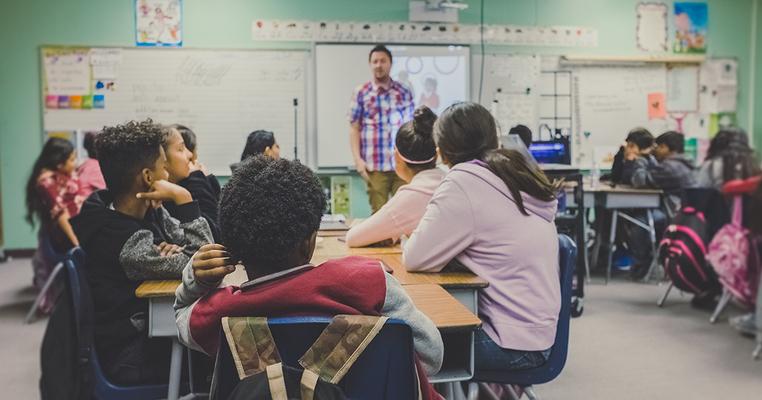
Environmental Justice Demands We Teach Climate Science
“We demand justice for all past, current, and future victims of the climate crisis, and so we are rising up. … We are going to change the fate of humanity, whether you like it or not.”
These words were part of an op-ed in The Guardian about the worldwide #FridaysForFuture school strikes for climate action, which brought 1.5 million young people and their allies out onto the streets on March 15, 2019. All told, strikes were held in 2,052 locations, spanning 123 different countries.
Maybe the most important part of that statement is its emphasis on all victims of this crisis. Because no conversation about climate change is complete without considering how it disproportionately affects low-income communities and communities of color.
This isn’t really new. These communities have been bearing the brunt of our warming world for a long time — precipitating the birth of the environmental justice movement, which truly burst onto the national scene in the 1980s.
At the time, the plight of these communities was largely ignored by the media, industry, government, and even green groups. And that’s still true today, though cable news manages to cover climate justice every now and then.
The good news is that change is possible. Through appropriate, rigorous, standards-based climate education, we can give these communities the tools they need to survive and thrive, so that all of humanity is protected from the harmful effects of the climate crisis.
Climate Change Affects Us All, But Not Equally
While climate change affects all of us, the impacts aren’t shared equally.
For many low-income communities and communities of color, climate change-worsened events like extreme drought, major floods, wildfires, and urban heat islands are compounding decades of disproportionate exposure to pollution from burning fossil fuels, a situation created in many cases by discriminatory policies and poor city planning.
The fossil fuel economy not only destabilizes our climate, but too often condemns these communities to inhale cancer-causing chemicals from oil refiners and fracking pipelines. It’s unsurprising then that low-income communities are also plagued by particularly high rates of asthma and heart disease. Meanwhile, more affluent and white communities are generally spared from the burden of fossil fuel pollution.
Consider this:
- People of color breathe 38 percent more nitrogen oxide than their white counterparts.
- In 46 states, they also live with more air pollution.
- More than 68 percent of African Americans live within 30 miles of a coal-fired power plant, compared with 56 percent of whites and 39 percent of Latinos.
So, what can we do about it?
Solving the Problem
Fortunately, we can take steps to protect society’s most vulnerable communities from climate change. But we need to act now. There’s no time to sit around.
We previously outlined three major ways that cities can support environmental justice for low-income residents while addressing the climate crisis. In particular, they can:
1. Increase economic opportunities.
2. Make clean energy more accessible. (Learn more.)
3. Make disaster-preparedness a priority.
These three solutions can help vulnerable communities right now. But there’s another solution that can turn the tide for future generations: education.
Formal, structured education can improve climate literacy among at-risk young people, encourage changes in attitudes and behaviors, provide them with the tools to address the effects of global warming in their own communities, and help them adapt to the climate change-related concerns they will face down the road.
It can do so much to prepare us for uncertainties in the future – while providing a path forward by training the workforce of tomorrow for the urgent, decisive action required to beat this crisis.
As UNESCO puts it, education “is an essential element of the global response to climate change.”
The problem is, not everyone believes that. While it’s evident that climate science should be everywhere—online, covered by the media, and especially in school curriculums—classrooms across the country have become yet another battleground for deniers.
>> Free download: Climate Science Belongs in the Classroom <<
Consequently, only about 42 percent of schools teach climate science and only 45 percent of parents talk to their children about climate change, according to a recent NPR poll. This is not good enough. Not by a mile.
We’re not doing enough to properly educate future generations for the world they will inherit – and for the communities most vulnerable to the climate crisis, this could be especially devastating.
This lack of appropriate, standards-based climate education can even be looked at as another form of discrimination. In a world already stacked against them, we’re knowingly not offering low-income communities and communities of color the tools they need to create a better, more prosperous tomorrow for themselves.
Support Climate Science Education for All
Too often in the United States, low-income communities and communities of color affected by climate change have been left stranded, overlooked, and underserved.
But by providing young people in these communities with a proper education about the science of the climate crisis and its solutions, as well as opportunities for more-advanced training and education in the associated job fields of tomorrow – fields like clean energy, solar panel installation, architecture and building retrofitting, engineering, energy efficiency, and much, much more – we can give them the tools they need to fight for their communities.
Learn more about why it’s important to support climate science education in schools from sea to shining sea by downloading our latest free fact sheet, Climate Science Belongs in the Classroom.
In it, we describe the bad faith tactics deniers take to keep the truth out of schools and outline several talking points you can take to your local educators, principals, and school boards to champion a robust, science-centered climate change curriculum.

